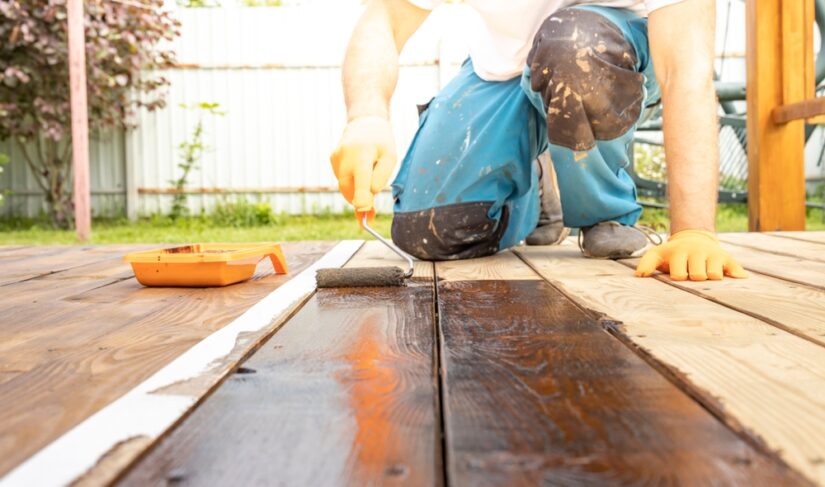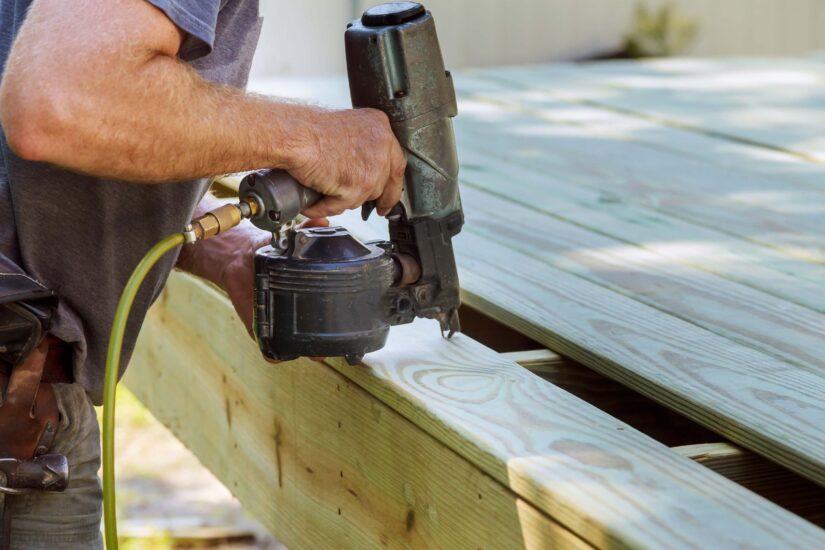
Living in Washington means your deck faces frequent rain, moisture, and seasonal weather shifts that can wear down wood and fasteners. To ensure your deck stays safe and functional, timing your repairs right is essential. The best time to fix your deck is during early spring or fall when temperatures are mild and the weather is drier, giving your materials the best chance to properly cure and preventing delays caused by rain or cold.
Mild weather conditions during these seasons help avoid problems like adhesives not setting or wood expanding and contracting, which can occur in colder or wetter months. Tackling repairs at the right time also helps extend the life of your deck and avoids unnecessary replacement costs.
How Washington’s Weather Influences Deck Repair Timing
Understanding Washington’s Climate Patterns
Washington experiences long, wet winters with frequent rainfall and occasional snow, followed by warm, dry summers. This combination means your deck faces constant moisture exposure during the colder months and drying in summer.
You need to plan repairs around these patterns. Wet weather slows drying times and can hinder paint or sealant adhesion. Summer heat, meanwhile, causes wood to expand, so it’s usually best to avoid repairing during peak heat to reduce material stress.
Weather Effects on Deck Structure and Longevity
The steady moisture leads to wood expanding and contracting repeatedly, which wears down the deck’s surface and structural components over time. This cycle promotes warping, cracking, and rot — problems that worsen without timely intervention.
Water infiltration can also cause hidden damage under deck boards, affecting fasteners and support posts. You must inspect thoroughly, especially after heavy rain or snow, because visible damage may represent only part of the problem.
Seasonal Challenges for Outdoor Repairs
Spring and fall provide moderate temperatures and less humidity, making them the ideal windows for deck repairs. You’ll get faster curing times for stains, sealants, and paints during these seasons.
Winter’s cold and damp conditions are not suitable for most repair work, as moisture can prevent proper adhesion and extend drying times. Summer’s dry conditions are good, but excessive heat can cause wood to shrink or crack after repairs.
When scheduling, avoid the wettest months to ensure materials bond correctly and repairs hold up against the Pacific Northwest’s climate stresses.
Optimal Seasons and Indicators for Deck Repair
Seasonal Guide to Deck Maintenance and Repairs
In Washington, late spring through early fall is the best window for deck repairs. By this time, the weather is warmer and drier, allowing wood to settle and adhesives or finishes to cure properly. Avoid winter and early spring work; cold temperatures and frequent rain slow drying and increase the chance of warping or incomplete bonding.
Summer offers optimal conditions but may come with higher contractor demand and cost. Early fall is often less busy and still suitable before moisture rises in late autumn. Plan repairs during these dry, moderate periods for the best results and durability.
Recognizing Signs Your Deck Needs Fixing
Look for cracking, splintering, rotting wood, or loose and shaky boards. These are clear indicators that your deck requires immediate attention to avoid safety hazards. Peeling or flaking stain or paint signals insufficient water protection and indicates refinishing is needed.
Also, check for rusted nails or screws and any decking movement underfoot, which suggests weakened structural integrity. Pay attention to streaking or dark spots that may suggest mold or mildew growth, common in Washington’s moist environment. Early recognition of these signs helps you schedule timely repairs.
Routine Maintenance Tips for Longevity
Clean your deck regularly to remove debris, which traps moisture and accelerates wood decay. Use a gentle deck cleaner in the spring to prepare for the season and after fall to clear away dirt before winter. Sealing or staining every 2-3 years protects your deck from moisture and UV damage.
Inspect fasteners and replace any that are rusted or popped out to maintain stability. Trim nearby plants to allow airflow and reduce moisture buildup. Keep gutters and downspouts clear to prevent water pooling near your deck’s foundation.
Cost Advantages of Timely Deck Restoration
Addressing repairs as soon as you notice issues is more cost-effective than waiting for major damage. Small repairs, such as replacing a few boards or tightening fasteners, typically require minimal labor and materials, saving you money upfront.
Delaying repairs can lead to rot, structural damage, and increased contractor costs. Extensive replacements often entail full deck rebuilds. Timely restoration also helps maintain your home’s value by preserving curb appeal and preventing safety liabilities.

Proven Approaches and Solutions for Deck Repairs in Washington
Preferred Materials and Methods Used by Got Rot
Got Rot favors composite decking and pressure-treated wood for their resilience against moisture and pests common in Washington’s damp environment. We use stainless steel fasteners to prevent rust and corrosion, which extends the life of your deck’s structure.
Our method includes thorough inspection of joists and footings before any surface work. If underlying supports are compromised, we replace them rather than just resurfacing. This approach prevents recurring issues and adds stability.
We also apply water-resistant sealants tailored to Pacific Northwest weather. This protects wooden components from mold, mildew, and prolonged water exposure, crucial for preserving your investment.
Addressing Common Deck Repair Challenges
Dealing with rot and warped boards is a frequent challenge in Washington decks due to heavy rain and humidity. Got Rot addresses this by removing and replacing damaged sections instead of patching, which can fail quickly.
Another issue is structural instability caused by shifting soil or water damage near footings. We reinforce or replace these supports to ensure your deck maintains balance and safety.
Mildew and mold buildup also degrade decking over time. Got Rot uses specialized cleaning and preventive treatments designed for this climate, which reduce maintenance needs and improve safety.
How Got Rot Ensures High-Quality Results
Got Rot emphasizes detailed inspections before any repair to pinpoint both visible and hidden damage. This comprehensive evaluation helps you avoid costly surprises after the work begins.
We provide transparent work plans and timelines so you know what to expect. Our skilled technicians follow best practices and local building codes to guarantee compliance and durability.
Post-repair, Got Rot offers maintenance advice customized for your deck’s materials and the Washington environment. This support helps you extend your deck’s lifespan and keep it safe season after season.